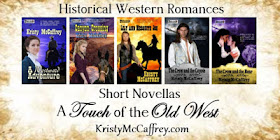By Kristy McCaffrey
 |
| John Hance |
One of the most colorful characters in Grand Canyon history
was Captain John Hance. Born in 1840, he served in both the Confederate and
Union armies, and is thought to be the first non-Native American resident of
the Grand Canyon. Arriving in 1883, he first attempted mining asbestos, but
failed due to the expense of removing it. He soon started giving tours, opening
the first tourist trail in the late nineteenth century. He’s credited with
carving a number of trails, which often followed old American Indian paths.
John Hance loved Grand Canyon and remained until his death
in 1919. In his memory, there is a Hance Trail, Hance Creek, Hance Canyon,
Hance Spring, Hance Mine, Hance Rapid, and a Hance’s Cove. He was famous
throughout Arizona for his tall tales. In one, he stated that the Colorado
River got so muddy that the only way to quench his thirst was to cut a piece of
water off and chew it.
 |
| Robert Brewster Stanton |
Robert Brewster Stanton (1846-1922) was a civil engineer who
conducted a survey of the Colorado River to determine the possibility of
building a railroad through the river’s canyons from the Green River in Utah to
the Gulf of California. In 1889, hired by a Denver realtor named Frank M. Brown
(who hoped to invest in a railroad opportunity), Stanton and a group of men, including
Brown, attempted to traverse the Colorado River. But instead of using heavy
wooden boats, as John Wesley Powell had done fifteen years prior, Brown decided
the expedition should go light. The boats were fragile, the men inexperienced
at rowing, and a fatal decision to go without life jackets resulted in the
drowning deaths of Brown and two other men within the first few miles of
entering Marble Canyon, generally considered to be the beginning of Grand
Canyon. Shaken, Stanton and the remaining crew climbed out of the canyon, but
soon returned with heavier and deeper boats made of oak, and completed the
survey in less than three months. Stanton’s efforts, however, never became a
reality, as anyone who’s been to the Canyon can attest—there is no railroad in
Grand Canyon.
 |
| The Kolb Brothers |
Emery and Ellsworth Kolb founded a photographic studio at
the Bright Angel trailhead, on the South Rim of the Grand Canyon, in 1903. At
first, it was nothing more than a small cave in the side of the canyon wall,
but later they erected a two-story wooden structure overlooking the Canyon.
They began a very profitable and adventuresome career as commercial
photographers, snapping photos of tourists on mules as they rode down the
trails. In the process, they provided historical records of early tourism in
Grand Canyon National Park.
The Kolb brothers recorded the first adventure movie down
the Colorado River in 1912. The movie ran at the Grand Canyon from 1915 until
1976—the year Emery Kolb died—making it the longest-running movie in history.
The Kolb brothers were active participants in the promotion
of Grand Canyon, photographing visitors, viewpoints, and areas of the park,
establishing the park as a site of national pride and a worldwide icon.
Kristy McCaffrey has been writing since she was very young, but it wasn’t until she was a stay-at-home mom that she considered becoming published. She’s the author of several historical western romances, all set in the American southwest. She lives in the Arizona desert with her husband, two chocolate labs, and whichever of their four teenaged children happen to be in residence.



Wonderful post, Kristy. Having visited the Grand Canyon, I can see why these men were obsessed with the place. It is so awe inspiring and filled with wonder and mystery that I've put it on my bucket list to return someday.
ReplyDeleteHi Agnes--it is such an amazing place and we really owe a debt to these men who did early exploration and documenting. I hope you make it back some day!!
ReplyDelete